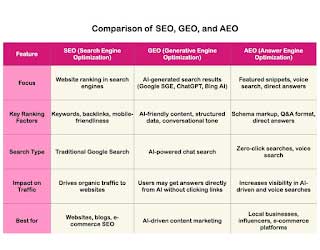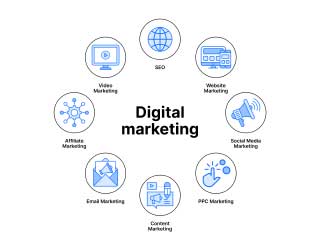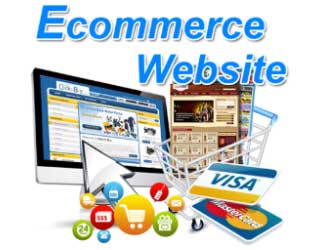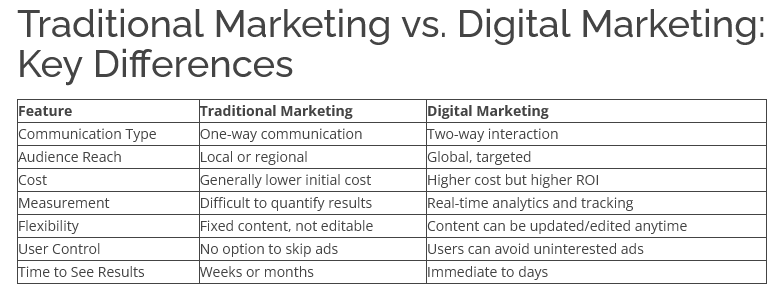SEO vs AEO vs GEO: Understanding the Future of Digital Visibility

In the ever-evolving digital landscape, businesses must stay ahead by optimizing their online presence. While SEO (Search Engine Optimization) has been a cornerstone of digital marketing for years, newer strategies like AEO (Answer Engine Optimization) and GEO (Generative Engine Optimization) are reshaping the way companies reach audiences.
In this blog, we break down what SEO, AEO, and GEO mean, how they’re used in the tech field, and how each can contribute to your business growth.
What is SEO?
SEO (Search Engine Optimization) refers to the process of optimizing your website and content to rank higher in traditional search engines like Google and Bing.
Key Components of SEO:
-
On-Page SEO: Keyword optimization, meta tags, URL structure, content quality
-
Off-Page SEO: Backlinks, social sharing, authority building
-
Technical SEO: Site speed, mobile-friendliness, structured data, crawlability
Use in Tech Field:
In the tech industry, SEO is essential for increasing organic traffic to software products, SaaS platforms, IT service pages, and developer documentation. A well-optimized site ensures discoverability among competitors.
Business Benefits:
-
Higher search visibility and brand awareness
-
Long-term cost-effective traffic generation
-
Trust and credibility from top-ranking positions
What is AEO?
AEO (Answer Engine Optimization) focuses on optimizing content for answer engines like Google’s featured snippets, voice assistants (Siri, Alexa), and AI-powered search platforms like ChatGPT.
Key Components of AEO:
-
Use of structured data (Schema.org)
-
Clear, concise answers to user questions
-
Question-based headings and bullet points
-
Strong FAQ content
Use in Tech Field:
Tech companies can use AEO to position their content for voice searches and AI snippets. For example, an IT support site might optimize for queries like “How to configure a Linux server?” so it appears directly in AI responses or voice searches.
Business Benefits:
-
Featured placements (position zero) on search results
-
Better visibility on voice and AI-based queries
-
Increased authority as an industry expert
-
Faster customer conversions due to instant answers
What is GEO?
GEO (Generative Engine Optimization) is a newer concept that focuses on optimizing content for generative AI platforms like ChatGPT, Gemini (Google), and Perplexity AI, which generate responses rather than showing traditional search results.
Key Components of GEO:
-
Providing structured, verifiable, and high-quality content
-
Authoritative sources and citations
-
Context-rich and detailed articles
-
AI-friendly formatting (clean headers, semantic HTML)
Use in Tech Field:
As users increasingly rely on AI assistants to make decisions, tech companies must create content that is favored and cited by these AI engines. GEO helps tech brands show up in AI responses when users ask for product comparisons, tutorials, or vendor recommendations.
Business Benefits:
-
Higher inclusion in AI-generated answers
-
Increased brand mentions and citations in AI tools
-
Competitive edge in AI-driven discovery
-
Future-proofing digital visibility as search habits evolve
Combining all three—SEO, AEO, and GEO—creates a powerful digital strategy that ensures your business is visible whether a user is searching, asking, or generating.
Final Thoughts
The digital world is no longer just about being “searchable”—it’s about being answerable and generatable. By embracing SEO, AEO, and GEO, businesses, especially in the tech sector, can maximize their visibility across traditional search, voice assistants, and generative AI platforms.
At Host4asia, we help companies stay ahead with smart digital strategies tailored for this new era of search and discovery. If you’re ready to grow your business online — not just be found, but be featured — we’re here to help.
| visit : www.host4asia.com |
|---|
| Contact: 91-9891242803, 8750437842 |
|---|

What is Digital Marketing? Strategies, Tools & Trends in 2025
Understand how modern digital marketing strategies work to grow your brand in 2025
How Digital Marketing Works
Digital marketing uses digital channels like websites, search engines, and social media to connect with customers. It combines strategies such as SEO, PPC, content creation, and analytics to drive online growth.
Key Components of Digital Marketing in 2025
1. Define Goals and Audience
Clarify your marketing objectives and identify your target audience for effective campaign performance and personalization.
2. SEO and SEM
Optimize your site with SEO best practices and run PPC campaigns to increase visibility in search engine results and attract high-converting traffic.
3. Content Marketing
Create blog posts, videos, and guides that solve problems and provide value. High-quality content improves engagement and boosts SEO.
4. Social Media Marketing
Use platforms like Instagram, LinkedIn, and Facebook to engage with audiences, run ads, and increase brand awareness and loyalty.
5. Email Marketing
Build lists and send personalized, value-driven content to nurture leads and convert prospects with newsletters and promotions.
6. Influencer Marketing
Partner with niche influencers to reach targeted followers, boost credibility, and expand brand visibility across digital platforms.
7. Analytics and Optimization
Track KPIs with tools like Google Analytics, refine your strategy, and continuously improve campaign performance and ROI.
Why Digital Marketing Matters in 2025
In a highly competitive digital economy, effective online marketing is essential for lead generation, brand authority, and business growth.

E-commerce Website Guide for 2025: Build Your Online Store & Sell Products
What is an E-commerce Website?
E-commerce websites enable businesses to sell products or services online, offering customers a seamless shopping experience with secure payment gateways and fast shipping options.
Steps to Build a Successful E-commerce Website
- Plan Your Strategy: Define target audience, product range, pricing, and business goals for your online store.
- Choose an E-commerce Platform: Shopify, WooCommerce, Magento, BigCommerce, Squarespace are top choices for 2025.
- Register Domain & Set Hosting: Secure a brandable domain and reliable e-commerce hosting with SSL for security.
- Design & User Experience: Create responsive, mobile-friendly layouts optimized for fast loading and easy navigation.
- Add Products: Upload high-quality images, detailed descriptions, and optimize for SEO.
- Integrate Payment Gateways: Support popular options like credit cards, PayPal, Apple Pay, Google Pay.
- Setup Shipping & Fulfillment: Include shipping calculators, tracking, and multiple carrier options.
- Implement SEO & Analytics: Optimize meta tags, keywords, and use Google Analytics to track performance.
- Market Your Store: Use social media marketing, email campaigns, influencer partnerships, and PPC ads to boost sales.
- Customer Support: Provide live chat, FAQs, and timely assistance for customer satisfaction.
Types of E-commerce Websites
- B2C (Business-to-Consumer): Selling directly to consumers (e.g., Amazon, clothing stores).
- B2B (Business-to-Business): Transactions between businesses, often involving bulk orders.
- C2C (Consumer-to-Consumer): Platforms for individuals selling to each other, like eBay.
- P2P (Peer-to-Peer): Sharing economy services such as Uber and Airbnb.
- Dropshipping: Selling products without holding inventory, fulfilled by suppliers.
- Subscription-based: Recurring product/service delivery like subscription boxes or SaaS.
- Digital Products: Downloadable goods such as e-books, courses, and software.
- Non-profit E-commerce: Platforms for donations, fundraising, and merchandise sales for NGOs.
Why Choose Host4Asia for Your E-commerce Website?
Host4Asia offers expert guidance on platform selection, reliable hosting, SSL security, and tailored digital marketing strategies to grow your online business in 2025.

Comparison Between Traditional Marketing and Digital Marketing
Let’s understand the terminology of traditional marketing and digital marketing to help you decide which marketing strategy suits your business.
What is Traditional Marketing?
Traditional marketing refers to the well-established methods of purchasing and selling goods and services using offline channels. Historically, human society progressed from barter systems to trading and marketing. Traditional marketing involves techniques such as:
- Billboards and signboards
- Flyers and newspapers
- Television and radio commercials
- Posters and broadcasts
- Door-to-door sales and sponsorships
While traditional marketing is generally less expensive upfront, it is often less effective at building brand awareness and hard to measure in terms of ROI. It targets local audiences with one-way communication and shows results over weeks or months. Moreover, users have no control over the ads they see.
What is Digital Marketing?
Digital marketing moves faster than traditional methods and involves promoting products or services via electronic channels. The term “digital” comes from the binary system (0s and 1s) used by computers. Digital marketing channels include:
- Email marketing campaigns
- Search engine optimization (SEO)
- Social media marketing on platforms like Facebook, Instagram, Twitter, and LinkedIn
- Pay-per-click (PPC) advertising
Known as the “father of digital marketing,” Philip Kotler laid the foundation of modern marketing strategies. Digital marketing is costlier but highly efficient for brand promotion and global reach. It provides tools to:
- Analyze customer engagement and product performance
- Customize ads and marketing messages for targeted users
- Edit and update advertisements in real time
- Allow users to skip unwanted ads
Digital marketing uses two-way communication and offers quick, measurable results that improve customer satisfaction and drive business growth worldwide.
Traditional Marketing vs. Digital Marketing: Key Differences
| Feature | Traditional Marketing | Digital Marketing |
|---|---|---|
| Communication Type | One-way communication | Two-way interaction |
| Audience Reach | Local or regional | Global, targeted |
| Cost | Generally lower initial cost | Higher cost but higher ROI |
| Measurement | Difficult to quantify results | Real-time analytics and tracking |
| Flexibility | Fixed content, not editable | Content can be updated/edited anytime |
| User Control | No option to skip ads | Users can avoid uninterested ads |
| Time to See Results | Weeks or months | Immediate to days |
Conclusion
Both traditional marketing and digital marketing have their benefits depending on your business goals. Traditional marketing remains effective for businesses focusing on local markets and those comfortable with established methods. In contrast, digital marketing drives global growth and provides measurable, adaptable strategies ideal for modern businesses aiming for wider reach and customer engagement.
For startups and growing enterprises, incorporating digital marketing strategies such as SEO, social media, and online advertising is essential to stay competitive and maximize ROI.